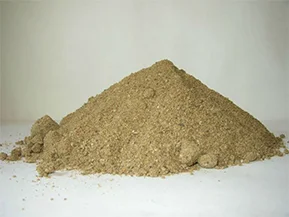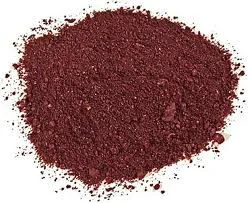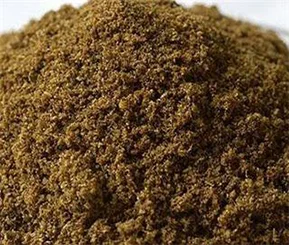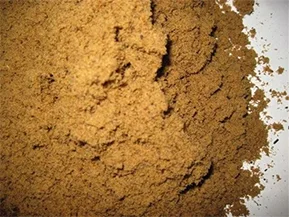Rendering Centrifuges for Beef, Poultry, and Swine
What Is Rendering?
Rendering is a process that repurposes the inedible parts of animals separated as waste in slaughterhouses and meat processing plants, returning them to the economy. The proportion of slaughtered animals consumed varies from country to country depending on different cultural habits. In Western countries, this waste constitutes approximately 30-35% of slaughtered animals.
Fast-growing animals require high levels of quality energy. Utilizing fats in the preparation of high-energy mixed feeds helps balance energy. Compared to proteins and carbohydrates, fats contain significantly more metabolic energy, averaging between 7,000-10,000 kcal/kg. The use of fats in animal feed offers several advantages.
Rendering Products
This transformation contributes to both environmental health and the economy by converting inedible animal parts into poultry, fish, cat, and dog food additives, as well as fat.
The rendering process consists of crushing and grinding animal by-products, followed by a cooking process designed to remove moisture and eliminate microorganisms. The separation of solid (protein) and melted fat (tallow) is carried out using centrifugation. The solid portion is ground into powder to produce meat and bone meal.
The latest technologies, stringent regulations, and environmental awareness have turned modern rendering plants into high-tech enterprises requiring substantial investments.
Types of Rendering Products
Meat Meal: Derived from animal waste in slaughterhouses and facilities producing sausages, salami, and hot dogs. The fat is removed, and the remaining material is dried and ground. Meat meal does not contain feathers, horns, skin, hooves, stomach contents, blood, or manure. It is rich and balanced in protein and essential amino acids. In terms of biological value, it ranks second among animal-derived feeds after fish meal.
Meat and Bone Meal: Obtained by processing entire carcasses or parts of slaughtered or deceased animals, removing fat, drying, and grinding. The phosphorus and crude protein content varies depending on the bone ratio in the raw material.
Bone Meal: Produced by cooking, drying, and grinding animal bones from which fat and collagen tissues have been removed. Bone meal has a low protein value and is less significant in essential amino acids.

Blood Meal: Collected from slaughterhouses and meat processing plants after animal slaughter. The blood is heated until it coagulates, filtered, dried, and ground into blood meal. The most critical factor affecting blood meal quality is temperature. High temperatures inactivate lysine, reducing digestibility. Inactivated lysine has no nutritional value for monogastric animals. However, blood meal is rich in protein but deficient in phosphorus and calcium, making it a valuable protein source for poultry.

Poultry Meal: A by-product of poultry slaughterhouses, consisting of internal organs and other inedible parts, excluding feathers. The protein, calcium, and phosphorus content varies based on raw material composition. In Turkey, poultry meal production does not separate feathers, leading to a high crude protein content but low digestibility. In the U.S., poultry meal with lower ash content is considered higher quality by pet food manufacturers and commands a higher price than high-ash products.

Feather Meal: Produced by hydrolyzing, sterilizing, drying, and grinding poultry feathers after slaughter. In Turkey, feathers are usually processed together with other poultry waste rather than separately. Untreated poultry feathers are indigestible by animals. The quality of feather meal depends mainly on the hydrolysis process—excessively high pressure and temperature can degrade the protein quality. Raw feathers are rich in cysteine amino acid.

Rendering Processes
Rendering facilities use three main processes:
- Wet Rendering
- Dry Rendering
- Blood Meal Processing
Two primary rendering systems are used worldwide for processing meat and bone by-products:
- Fat Processing as Dried Material
- Fat Processing as a Liquid Phase
These processes are utilized in high-value applications like poultry fat, fish oil, and edible oils, which require heat-sensitive handling.
Rendering Process Overview
- Decanter Inlet: 6-7% solid content
- Decanter Outlet: Less than 1% solid content
- Fat Content in Solids: 20-30%
- Product Temperature: 80-90°C
- G-Force: 3000
- Centrifugation Time: 5 minutes
Two-Phase Output Products
- Oil Output: 0.5-1.0% Dry Matter
- Solid Output:
- The product exiting the disc dryer is fed into presses.
- Residual sludge oil after pressing is further processed in a decanter centrifuge for purification.
- About 1/10 of the rendering product exiting the disc dryer is processed in a decanter centrifuge.
Average Values (%) of Solid Products from Decanter and Press
| Meat and Bone Meal (Processed Animal Protein) | Poultry By-Products | Feather Meal | Blood Meal | |
|---|---|---|---|---|
| Protein | 45-65 | 60-68 | 80-85 | 90-95 |
| Fat | 12-16 | 12-16 | 7-11 | 1 |
| Ash | 22-35 | 10-20 | 4-10 | 2-3 |
| Phosphorus | 3-7 | 2-3 | 0.5 | 0.2-1.0 |
| Water | 5-7 | 4-7 | 6-8 | 4-7 |
This table shows the typical composition of solid by-products from animal processing, which are often used in animal feed.
Amino Acid Values (%) in Solid Products from Decanter and Press
| Amino Acid | Meat and Bone Meal (Processed Animal Protein) | Poultry By-Products | Feather Meal | Blood Meal |
|---|---|---|---|---|
| Methionine | 0.7 | 1.0 | 0.6 | 0.6 |
| Cystine | 0.7 | 1.0 | 4.3 | 0.5 |
| Lysine | 2.6 | 3.1 | 2.3 | 7.1 |
| Threonine | 1.7 | 2.2 | 3.8 | 3.2 |
| Isoleucine | 1.5 | 2.2 | 3.9 | 1.0 |
| Valine | 2.4 | 2.9 | 5.9 | 7.3 |
| Tryptophan | 0.3 | 0.4 | 0.6 | 1.3 |
| Arginine | 3.3 | 3.9 | 5.6 | 3.6 |
| Histidine | 1.0 | 1.1 | 0.9 | 3.5 |
| Leucine | 3.3 | 4.0 | 6.9 | 10.5 |
| Phenylalanine | 1.8 | 2.3 | 3.9 | 5.7 |
| Tyrosine | 1.2 | 1.7 | 2.5 | 2.1 |
| Glycine | 6.7 | 6.2 | 6.1 | 4.6 |
| Serine | 2.2 | 2.7 | 8.5 | 4.3 |
Key Points:
- Amino Acid Values: The table displays the percentage (%) of various amino acids found in different animal by-products.
- Decanter and Press: These are industrial processes used to separate solids from liquids, resulting in the “solid products” mentioned in the title.
- Animal By-Products: The table lists common by-products used in animal feed:
- Meat and Bone Meal (Processed Animal Protein)
- Poultry By-Products
- Feather Meal
- Blood Meal
This table is valuable for understanding the nutritional composition of these by-products, especially in the context of animal feed formulation.
More About HAUS
I Series Industrial Decanters
The DDI Series Decanter Centrifuge consists of a horizontally rotating drum, a screw conveyor for continuous discharge of separated solid phase, and a dual-motor drive system that controls the differential speed between the drum and the screw.

Designed by HAUS, the DDI Series Decanter Centrifuge meets the needs of industries requiring durability, such as rendering, chemical, pharmaceutical, solid and liquid fat extraction, protein recovery, mining, lubricants, and fuel processing. Its primary function is to separate solids from liquid mixtures and obtain one or two purified liquid phases while ensuring the driest possible solid output.
The DDI Series Decanter Centrifuge is highly effective in processing by-products and recovering valuable materials, making it indispensable for recycling processes.
I Series Industrial Separators
HAUS I Series Separators are designed for industrial applications, offering high separation efficiency through strong centrifugal forces. They are specifically developed for processing vegetable oils (such as coconut oil and palm oil), waste oils, oil refining, and animal fats (such as fish oil).

These separators are widely used in various sectors globally. Made from specially selected duplex stainless steel materials, they are resistant to corrosion. Their sealing elements are designed for high-temperature applications. The high-speed rotating drum assembly is protected against wear using replaceable drum protection parts and piston protection components.
The HAUS I Series Separators are designed for continuous operation and superior product quality. They incorporate the latest separation technology, minimizing power consumption and maximizing efficiency through rapid discharge systems, saving both energy and time.




